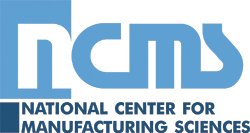Historical Articles
June, 1954 issue of Plating
Joint Strength Properties of Tin-Lead Alloy Deposits
Vincent P. McConnell, General Electric Co., Electronics Park, Syracuse, N.Y.
INTRODUCTION
Mass soldering in an automatic process has many advantages, and it was the possibility of accomplishing this that led to the investigations described below. Considered first is the joint strength of tin-lead deposits on steel, and then their joint strength over copper-plated aluminum.Test pieces used for this investigation were 4 inches by I inch by 1/16 inch of SAE 1010 steel. These pieces were given conventional alkaline cleaning steps followed by a dip in 50 per cent by volume hydrochloric acid with appropriate water rinses.
The plating solution consisted of a tin-lead fluoborate solution with gelatin as an addition agent.1 Solutions were made up during the investigation to deposit 10, 35, 50 and 60 per cent tin alloys. Anodes were of the composition of the-alloy desired in the deposit.
Cathode current density was approximately 20 amps/sq ft in all cases and the deposits were measured with a calibrated thickness gage. (Plating Thickness Gage, General Electric Co., Apparatus Div., Schenectady, N.Y.)
SOLDER (Sn-Pb) DEPOSITS ON STEEL
Procedure
The pieces to be soldered were plated, dipped in flux and then clamped in a special fixture (See Fig. 1) which allowed a one-inch overlap and gave a soldered area of one-square inch. Heat was applied by placing the entire fixture in an oven at the desired temperature for 15 or 20 minutes. For hand-soldered pieces, heat was applied with a soldering iron using the fixture to position the pieces. Pieces soldered by the hot-dip method first were dipped in flux, then in a pot of molten solder until the surface was tinned. The joint was made by applying more flux, clamping the pieces in the fixture and then furnace heating them at 475° F for 15 minutes.
 |
| Fig. 2. Joint strength on plated parts with varying temperature. Symbol X = tin-lead alloy deposit on steel; Symbol 0 = tin-lead alloy deposit on cadmium plated steel; alloy deposit thickness (35 per cent tin—65 per cent lead) between 0.0007 and 0.0009 inch; cadmium deposit thickness at 0.0004 inch. Rosin-alcohol flux used |
A variety of fluxes were used including (1,) rosin alcohol with and without an activator, (2) organic acid and (3) zinc ammonium chloride.
Since some of the parts in use presumably would be plated with other metals, it was decided to use bare steel plus alloy plate in comparison with cadmium plated steel plus alloy plate. No evidence was found of any great difference in joint strength as is shown in Fig. 2. These data are in agreement with the observations of other workers.2 The joint strength leveled off at a parts joining temperature between 475 and 500° F for the 35 per cent tin—65 per cent lead alloy. Since solder of this composition is entirely liquid at temperatures above 475° F, it appeared from the author’s tests that a temperature above the liquidus is required for maximum strength. Also temperatures that bring the solder only to the plastic range will not produce a strong joint. This test series also indicated that the appearance of the soldered joint may be misleading. Joints made at 400° F appeared to be good ones with well-formed fillets around the edges, but their strength was only 60 per cent of that of joints made at higher temperatures.
Deposit thickness of the solder exerted but a minor influence on joint strength. Plate thicknesses above 0.0003 inch gave joints of approximately the same strength, and plates with thicknesses as low as 0.0001 inch gave joint strengths 85 per cent as strong as those obtained with deposits of 0.001 inch or greater.
As a result of the operation of clamping these pieces ,together, some excess- solder flowed out of the joint, however, no thickness measurements were made after the soldering was completed. Test pieces also were plated with 0.012 inch of tin-lead alloy and these failed at 2850 lbs, a value which is about the same as that for joints made with thinner plated solder layers.
 |
| Fig. 3. Variation of joint strength with variation of plated Sn-Pb alloy composition. Oven temperatures for 190 per cent tin lead alloy were at 650° F, other tin-lead alloys were joined at temperature of 475° F. 0 = Rosin-alcohol flux, X = activated rosin-base flux, .- = organic chloride flux, = zinc ammonium chloride flux. |
Fig. 3 indicates that a 50-50 solder gave the strongest joint regardless of the flux used. The activated rosin-alcohol and organic acid fluxes gave stronger joints than pure rosin in alcohol as was expected. The poor showing of the corrosive zinc ammonium chloride flux was unexpected but the poor results may have been caused by the low (475° F) temperature used. This is in agreement with the Tin Research Institute3 which recommends a soldering temperature of about 540° F for use with zinc chloride fluxes to prevent flux inclusions. The 10-90 (Sn-Pb) alloy was soldered at 650° F and presumably the flax inclusions were prevented and thus allowed a stronger joint to be obtained. It can be seen thus that there is a good possibility of forming weak joints in hand soldering operations where temperature is not well-controlled when zinc chloride fluxes are used.
Tests on the effect of storage time on joint strength indicated only a slight drop in strength after storage of six and nine months. Since it was felt doubtful that parts would be stored much longer than this, no further tests were run. It must be noted, however, that plain nonactivated rosin-alcohol flux was used on these tests. ‘ Since the drop in strength was negligible, no tests were run with activated fluxes which previous experience has shown to be more effective. Seabright4 has shown that solderability of electroplated tin-lead parts is excellent after extended storage periods.
A comparison of tin-lead plate, hot-dip and hand soldered methods of joining the plates is shown in Fig. 4. In most cases, the joint strengths were the same except when rosin-alcohol flux was used, and here difficulty was encountered in wetting the steel during hand soldering operations.
The acid flux again gave poor results, probably for the reasons explained previously.
 |
| Fig. 4. Comparison of joint strengths resulting from various joining conditions. 40 per cent tin—60 per cent lead.: Temperature 475° F |
Satisfactory joints were made by tin-lead alloy (solder) plating provided that only one member and an activated flux were used. Poor joints resulted when rosin-alcohol flux was used on one unplated member, but when this member was cadmium or copper plated, satisfactory joints resulted. When the joints were made without flux, a poor joint resulted with about 1/3 the strength of well-bonded specimens.
The failing stresses on the graphs are applicable to an overlap joint with an area of one-square inch, while the load is being applied fairly rapidly at room temperature. When the temperature is higher, or when the joint is loaded over a long period of time, the results will be much lower. Investigations by R. K. Allen5 indicated that the unit stress that a joint is capable of withstanding decreases as the area of the joint increases. Allen attributed this to the larger percentage of void areas that appearing in joints of large area.
This soldering method appears to be well-adapted to automatic or semiautomatic ‘ operations for specialized ‘ applications. Solder plated parts merely would have to be dipped in flux, then held together in an appropriate jig and sent through an induction heater or oven at the proper temperature.
Although the as-plated appearance of the- Sn-Pb solder plate is a drawback, a bright finish may be obtained when the parts are dipped in hot palm oil. - The joint strength is about the same, and the bright finish is retained after the joint has been made.
No detailed investigation of cost of solder plating as compared with conventional soldering methods has been made, but in one application6 the cost of an electroplating operation (including labor and overhead charg-es) is 1/3 to 1/2 the cost of a hot-dip tinning operation.
Summary: Sn-Pb Coatings on Steel
1. Joint strengths comparable with those made by conventional soldering methods-can be made with tin-lead solder plated members by clamping the members together and heating to soldering temperatures.2. Such joints can be made with rosin-alcohol flux if both members are plated with solder or if one member is plated with tin-lead solder and the other plated with either cadmium or copper.
3. These joints can be made if one member is solder plated and the other is-unplated, provided that an activated rosin type flux is used.
4. Thicknesses of 0.0003 inch and over are not critical.
5. Maximum strength is obtained from 50-50 tin-lead compositions
6. Tin-lead plated parts may be stored for extended lengths of time prior to soldering with no significant decrease in resultant joint strength.
SOLDER (Sn—Pb) DEPOSITS ON ALUMINUM
The desirability of using aluminum- in airborne equipment and in some commercial items led to this investigation as a follow-up of the work on steel as reported above. The limited solderability of aluminum poses assembly joining problems, and it was felt that some technique that would allow mass soldering of units would be valuable in many applications. ‘ An attempt was made in this investigation to determine the effects of the principal variables which must be controlled in order to obtain a good soldered joint.Joints were made by plating the aluminum specimens with tin-lead alloy deposits, fluxing, clamping the members together and heating in a furnace to obtain fusion. Various preparatory techniques were used and compared with conventional joining methods.
Although plated aluminum is subject to corrosion, no study was made of this or the treatment necessary to protect it. This article is concerned only with the joint strength properties of tin-lead electrodeposits on aluminum, but the possibility of corrosion should be considered wherever plated aluminum is used.
Procedure
The aluminum test specimens used in the investigation were 1 inch by ‘3 inches by 0.125 inch and were cut from 52S and 61S alloy sheets.
Since aluminum forms a thin film of oxide which is not receptive to electrodeposits, it was necessary to condition the surface prior to plating. The aluminum pieces had various amounts of oil and grease on the surface and they were cleaned first by an immersion in a commercial aluminum cleaner. Following the cleaning operation, they were rinsed in water and immersed in a 50 per cent by volume nitric acid solution. The panels then were rinsed in water and immersed in a solution of the following composition:Zinc oxide—100 grams/liter
Sodium hydroxide—525 grams/literThis solution dissolves the oxide film, thus exposing -the aluminum which then goes into solution and replaces an equivalent amount of zinc. Since the aluminum is completely covered with a thin layer of zinc after it has received the zincate treatment, the surface is receptive to copper electrodeposits.7
 |
| Fig. 5. Effect of soldering temperature on joint strength. Solid-line plots indicate pieces on which a nonactivated rosin-alcohol flux was used. Dotted-line plots indicate pieces on which an activated flux was used. Symbols ., 0 represent values obtained oh 52S aluminum. Symbols X, represent values obtained on 61S aluminum |
 |
| Fig. 6. Effect of time in furnace on joint strength. Aluminum alloy 52S; furnace temperature 450° F, flux—activated rosin-alcohol; plate thickness—0.0008 to 0.001 inch. Solder plate composition—50 per cent tin, 50 per cent lead |
 |
| Fig. 7. Effect of immersion time in zincate solution on joint strength. Symbol O curve represents 52S while X curve represents 61S aluminum. Furnace temperature 50° F, flux—rosin-alcohol, plate thickness—0.0008 to 0.001 inch. Solder deposit—50 per cent tin, 50 per cent lead |
 |
| Fig. 8. Photos of solder joint faces of aluminum test strips after failure, showing different end results. a—Typical joint. b—Joint of 52S alloy test specimens which blistered badly. c—Joint of 52S alloy test specimens which were immersed in zincate solution for three minutes |
The test specimens were immersed in the zincate solution for 30 seconds except when the effect of immersion times was studied. After the zincate treatment, the specimens were rinsed in water and copper plated in a solution of the following composition:
Copper—15.75 grams/liter
Free cyanide—3.0 grams/liter
Rochelle salts—45.0 grams/liter
Sodium carbonate—30.0 grams/liter
pH—10.2 electrometricThe test specimens were plated with approximately 0.00025 inch of copper, except when the effect of thickness of the copper undercoat was studied. After removal from the copper bath, the specimens were rinsed and tin-lead alloy plated in a fluoborate solutionl of the following composition:
Stannous tin—45.0 grams/liter
Lead—35.0 grams/liter
Free fluoboric acid—50.0 grams/liter
Free boric acid—25.0 grams/liter
Gelatin—4.0 grams/literThe anodes were a 50 per cent tin-50 per cent lead fine-grain structure alloy and were encased in synthetic fiber bags. (Vinyl type fabric marketed under the trade name, Vinyon).
Except when the effect of solder plate thickness was studied, the specimens were plated with 0.0008 inch of alloy plate. The test specimens then were water rinsed and dried.
The solder plated specimens were dipped in flux, placed in the clamping device and heated in a furnace to obtain fusion.
A micrometer was used to measure the thickness of solder plate. Of course, this method was not too accurate, as there were variations in the thickness of the basis metal and also unevenness of plating. However, in order to overcome some of these difficulties and to obtain results that were reasonably accurate, five readings were taken in the area to be soldered, and the plate thickness computed by taking the average value of the differences in readings before and after the specimens were plated. The diameter value thus obtained was halved to arrive at the thickness value. For the copper and the very thin plates of solder, it was necessary to calculate the thickness from the current density-plating time-efficiency tables. Each solution was checked for efficiency by the use of a copper coulometer.
A number of joints were made with conventional hand soldering techniques. Test specimens of the two alloys that were used were cleaned, deoxidized, zincated and copper plated. The copper plate was tinned by heating the strips with a soldering iron, applying flux and then drawing the iron and solder over the piece. The overlap of two pieces was made by heating them with a torch while in position until they were fused together.
DISCUSSION
Effect of Soldering Temperature
As-can be seen from Fig. 5, joints which were soldered at a temperature of 450° F were the strongest. The lower joint strength of the tin-lead solder plated test-specimens which were soldered at a temperature of 400° F may be attributed to incomplete fusion of the solder at that temperature. The liquidus temperature of the solder used is approximately 440° F and the solidus 361° F.The lower joint strength of specimens which were soldered at a temperature between 500° F and 600° F may be attributed to the decomposition of the rosin-alcohol flux at the higher temperatures and also the excessive formation of intermetallic compounds. Since one of the variables which governs the rate of alloy formation is temperature, there will, of course, be more alloy formed at the higher temperatures. W. R. Lewis3 while investigating solders has shown that soldered joints which have thin alloy layers are stronger than those with thick layers.
As shown in Fig. 6, joints which were soldered at a temperature of 450° F were strongest when they were maintained at temperature for 15 minutes. An explanation for this is that as the duration of molten contact was increased, more alloy was formed. The alloy formation was not confined to a compact layer, but was somewhat dispersed throughout the solder; therefore, the solder composition, and thus its strength, was changed.
Effect of Zincate Treatment Time
Best results were obtained when 52S alloy specimens were immersed in the zincate solution for periods from 10 to 90 seconds, and 61S alloy specimens for periods from 10 to 120 seconds. From the results obtained (Fig. 7), it is apparent that a thin zinc immersion coat provides a better basis for the copper plate than the thicker coats.The thicker zinc deposits become spongy, and therefore provide a poor surface for the copper plate. By observing the joints after they failed, it could be seen that 52S alloy specimens which were immersed in the zincate solution for 3 minutes failed in spots. This condition is shown in the picture of a joint in Fig. 8.
A number of 52S alloy specimens blistered when they-were copper plated, whereas the 61S alloy specimens rarely blistered. Some of the 52S alloy strips which blistered developed only small blisters near the edges. As R. A. Ehrhardt and J. M. Guthrie discovered, the blisters often appeared in rows along the direction of rolling, and seemed to be caused by the segregation of the micro-constituents.
During the investigation, several things were noticed in the processing of 52S and 61S alloys. The ‘52S alloy was- susceptible to blistering, while 61S rarely blistered. When the 52S developed small blisters, the test pieces had almost the same strength as the unblistered panels. When the blisters were large, the joint strength was much lower. When the double zincate treatment was used, the results were slightly higher and the blistering- of the 52S alloy was almost eliminated. Another treatment which almost eliminated blistering of 52S was that of agitation of the panel in the zincate solution, a step which produced a much smoother and more uniform zinc film.
Effect of Copper Plate and Sn-Pb Solder Plate Thickness
From the results obtained, it was shown that the copper plate must have a minimum thickness of 0.0002 inch in order to obtain a soldered joint having maximum strength.The aluminum specimens should have a solder plate of at least 0.0003 inch if maximum strength is to be obtained. As the plate thickness is increased above 0.0003 inch, the joint strength does not change. It must be remembered, however, that the specimens used in this investigation merely were clamped together, and no means was provided to separate the surfaces of the two specimens a given distance. When the specimens with the thick solder plate were fused, the excess solder was squeezed out and thus left approximately the same solder thickness between the specimens. Although a nice fillet was obtained when excess solder was- squeezed from the joint, it did not change appreciably the-strength of the joint.
Table I shows the results which were obtained by hand soldering. The copper strips have a lower joint strength than the aluminum, and at present the author has no satisfactory explanation for this phenomenon. In the aluminum specimens, the hand-soldered pieces compared favorably with the furnace soldered specimens.
|
TABLE
I. COMPARISON OF HAND-SOLDERED SPECIMENS
|
||||
|
Alloy
|
Finish
|
Flux
|
Solder
Composition
% Tin-% Lead |
Average
Strength (PSI)
|
|
52S* |
Copper
Plate |
Rosin-Alcohol
Rosin Core Activated Rosin-Alcohol Activated Rosin-Alcohol Rosin-Alcohol Rosin Core Activated Rosin-Alcohol Activated Rosin-Alcohol Rosin-Alcohol Rosin Core Activated Rosin-Alcohol Activated Rosin-Alcohol Rosin-Alcohol Activated Rosin-Alcohol Rosin-Alcohol Activated Rosin-Alcohol |
50-50
30-70 30-70 60-40 50-50 30-70 30-70 60-40 50-50 30-70 30-70 60-40 50-50 50-50 50-50 50-50 |
3600
2860 3100 3430 3035 2970 3240 3620 2720 2530 2550 3025 2600 2900 2690 3110 |
|
*Aluminum
Company of America designation for wrought aluminum alloy containing
2.5 per- cent magnesium, 0.25 per cent chromium.
**Aluminum Company of America designation for wrought aluminum alloy containing 0.25 per cent copper, 0.6 per cent silicon, 1.0 per cent magnesium, 0.25 per cent chromium. |
||||
Summary: Sn-Pb Coatings on Aluminum
1. Good joints on solder plated aluminum can be made using a 50 per cent tin-50 per cent lead alloy with a time of 15: minutes and furnace temperature of 450° F.
2. An activated rosin-alcohol flux gives better results than a straight rosin-alcohol mixture.
3. Minimum thicknesses of copper plate of 0.0002 inch and a solder plate (Sn-Pb) of 0.0003 inch are needed for good joints.
4. The zincate immersion time is not critical if it is held to between 10 and 90 seconds for 52S; 10 and 120 seconds for 61S alloys.ACKNOWLEDGMENT
The author is indebted to John Guyon and Edwin Steeb who worked on this project while on a Chemical and Metallurgical program assignment to the Electronics Laboratory of the author’s company.REFERENCES
1. Technical Information Manual, Bulletin LTF-1, General Chemical Company (1946).
2. Solder and Soldering Technique, Kester Solder Company (1948).
3. W. R. Lewis, Notes on Soldering Tin Research Institute (1948). .
4. L. H. Seabright, Iron Age 164, 93-96 (December, 1949).
5. R. K. Allen, ”Dip Soldering with Lead Base Solders,” General Electric Technical Information Series 3W36A6.
6. L. H. Seabright, Metal Progress 56, 509-510 (1949).
7. F. Keller and W. G. Zelley, ”Plating on Aluminum Alloys,” Proc. Am. Electroplaters’ Soc. 36, 149-162 (1949).
8. R. A. Ehrhardt and J. M. Guthrie, ”Plating on Aluminum,” Monthly Rev., Am. Electroplaters’ Soc. 34, 421-428 (1947).
 |
 |
 |
 |
 |
| Home | Subscribe | Regulations | Compliance Assistance | News | Resources | Resource Locators | Directories | Online Training | About | Search | NASF.org |
The information contained in this site is provided for your review and convenience. It
is not intended to provide legal advice with respect to any federal, state, or local regulation.
You should consult with legal counsel and appropriate authorities before interpreting any
regulations or undertaking any specific course of action.
Please note that many of the regulatory discussions on STERC refer to federal
regulations. In many cases, states or local governments have promulgated relevant rules and
standards
that are different and/or more stringent than the federal regulations. Therefore, to assure full
compliance, you should investigate and comply with all applicable federal, state and local
regulations.

